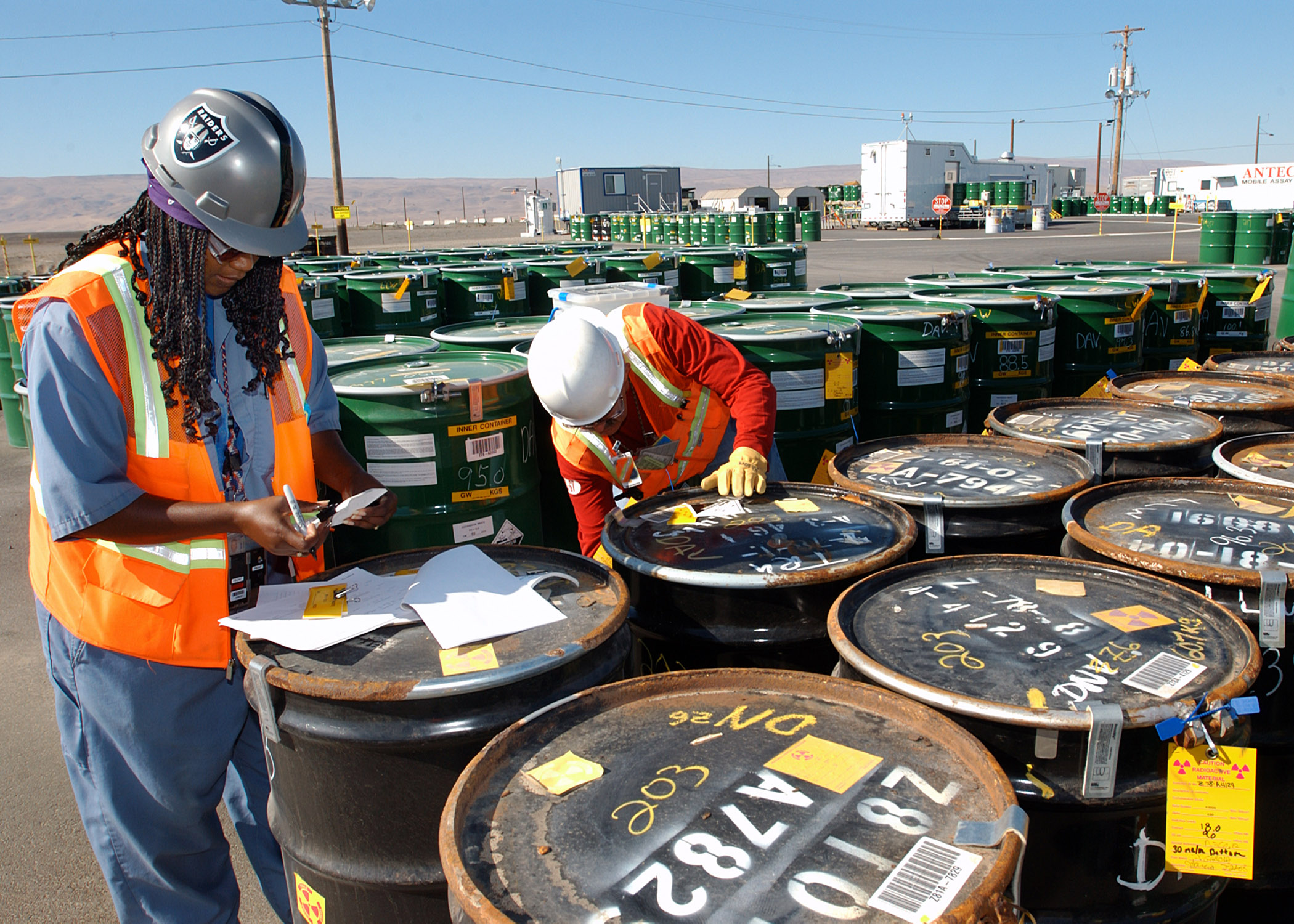 |
|
NIEHS/DOE Nuclear Worker Training Program (DOE)Worker Education and Training ProgramThe NIEHS Worker Education and Training Program (WETP), in partnership with the Department of Energy (DOE) Environmental Management Program, has supported qualified domestic nonprofit organizations to develop and administer model health and safety education programs for hazardous materials or waste workers within the nuclear weapons complex. 
Target populations for training in the DOE nuclear weapons complex include
those covered by requirements of Federal Occupational Health and Safety
Administration (CFR,
Title 29, Part 1910 (http://www.osha.gov/pls/oshaweb/owasrch.searc h_form?p_doc_type=STANDARDS&p_toc_level=0) The National Defense Authorization Act for fiscal years 1992 and 1993 (42 USC 7274(d)) authorized the Secretary of Energy in section 3131(a)(1)(A)-(B) to make awards: "to provide training and education to persons who are or may be engaged in hazardous substance response or emergency response at DOE nuclear weapons facilities; and to develop response curricula for such training and education." Through Interagency Agreement (IAG) with the DOE, NIEHS administers this training grant assistance program through awarding cooperative agreements. In an effort to rapidly move to the implementation stage and to leverage program resources, DOE studied the suitability of NIEHS as awards administrator for the DOE program. Based on a review of the NIEHS program, DOE entered into an agreement with NIEHS to award and administer the grants and to adapt the HAZWOPER program to meet the needs of DOE. Initial awards under the DOE program were made in 1993 for a three-year period. Additional funding was secured for a second round of training awards, which began in 1995. A briefing for DOE staff involved in the initiative was held in August 1995 to gather input on DOE priorities for the final funding plan. Adjustments were made to reflect the suggestions of DOE staff. A review by the National Advisory Environmental Health Sciences Council (NAEHSC) was completed on September 14-15, 1995 and awards were made, effective later that year. In the fall of 1999, the NIEHS WETP released the next formal program announcement requesting applications to support training activities for the Fiscal Year (FY) 2000-2004 program years. During 2004, NIEHS released a program announcement for the WETP requesting applications to support training activities over a five-year period (FY 2005-2010). After a lengthy review by committees of outside experts and other federal agencies, in a resulting competition, NIEHS announced eight (8) new awards for the DOE Program in September 2005. This training assistance program is targeted for workers engaged in environmental restoration, waste treatment, and emergency response activities at sites in the DOE's nuclear weapons complex. The goal of the DOE/NIEHS Worker Education and Training Program has been to provide site-specific, quality training to workers in a timely and cost-effective manner, through a partnership involving government, contractors, and labor organizations. A cornerstone of the program is the use of "worker-trainers," employees well versed in performing a given task in a hazardous environment who are trained to instruct other workers. Benefits of the partnership include fostering cooperation between management and workers, improving efficiency and quality of training, improving the ability to address worker concerns, and empowering all stakeholders to address site-specific safety and health needs. NIEHS, through its awardees, has provided high quality hazardous substance response or emergency response training to ensure that:
Across the DOE complex, approximately 2.8 million contact hours of hazardous materials training were delivered by the NIEHS/DOE awardees between 1994 and 2004. During this period, dozens of different courses were offered by eight awardees to workers at sites throughout the DOE complex. The awardees have trained more than 199,000 workers and presented nearly 15,000 classroom and hands-on training courses. |
|

